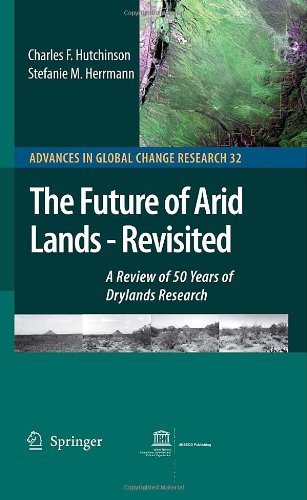

Most ebook files are in PDF format, so you can easily read them using various software such as Foxit Reader or directly on the Google Chrome browser.
Some ebook files are released by publishers in other formats such as .awz, .mobi, .epub, .fb2, etc. You may need to install specific software to read these formats on mobile/PC, such as Calibre.
Please read the tutorial at this link: https://ebookbell.com/faq
We offer FREE conversion to the popular formats you request; however, this may take some time. Therefore, right after payment, please email us, and we will try to provide the service as quickly as possible.
For some exceptional file formats or broken links (if any), please refrain from opening any disputes. Instead, email us first, and we will try to assist within a maximum of 6 hours.
EbookBell Team

5.0
30 reviews
ISBN 10: 9231040537
ISBN 13: 9789231040535
Author: Charles F Hutchinson, Stefanie M Herrmann
UNESCO commemorated its sixtieth anniversary in 2005. It was a year for refl- tion – a time to look back on the progress made and the achievements accomplished over the last 60 years. To celebrate the importance and relevance of science at UNESCO a publication entitled Sixty Years of Science at UNESCO: 1945–2005 was launched in 2006, which offers an insight into the organization’s commitment towards and endeavors in science from the past through to the present day. Within the United Nations System, UNESCO has one of the longest traditions in addressing dryland problems from a scientific point of view. As it happened, arid zones were precisely at the centre of UNESCO’s earliest efforts at international scientific collaboration in the study of natural resources. The first international research program dealing with these zones was launched back in 1951 under the direction of an International Advisory Committee. It was continued until 1964, after being raised to the status of a Major Project of the Organization in 1957. This Major Project was a pioneer program in many respects. One of its merits, and not the least, was that it blazed a trail in its interdisciplinary approach to the study of natural resources and its holistic view of the problems of arid and semiarid zones.
Introduction: The Future is Now
Contexts
The Search for Water
Weather Modification: More Than Bargained For?
Plant and Animal Alternatives
Ecosystems
Land Use and Management
Policy in and for Drylands
The Future of Arid Lands — Revisited
arid land would
arid lands documentary
arid lands university of arizona
why are arid lands important
arid lands meaning
Tags: Charles F Hutchinson, Stefanie M Herrmann, Lands, Review